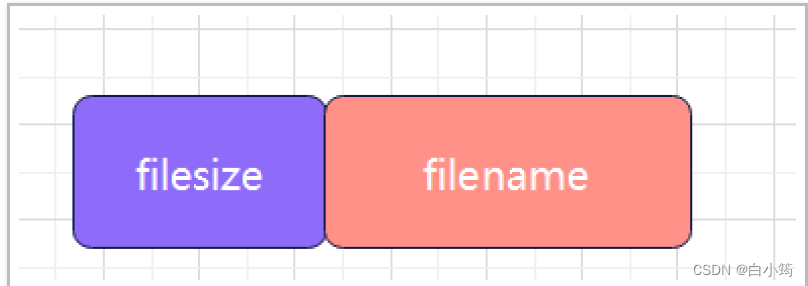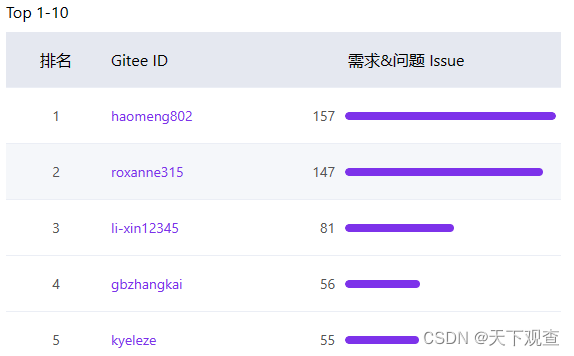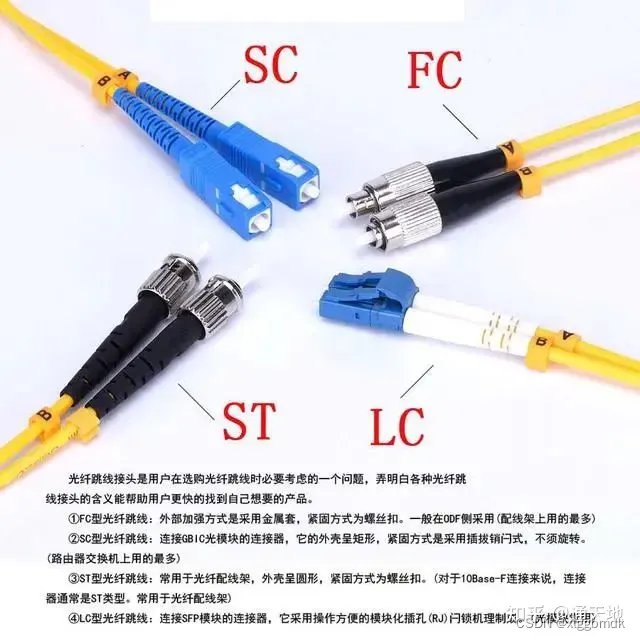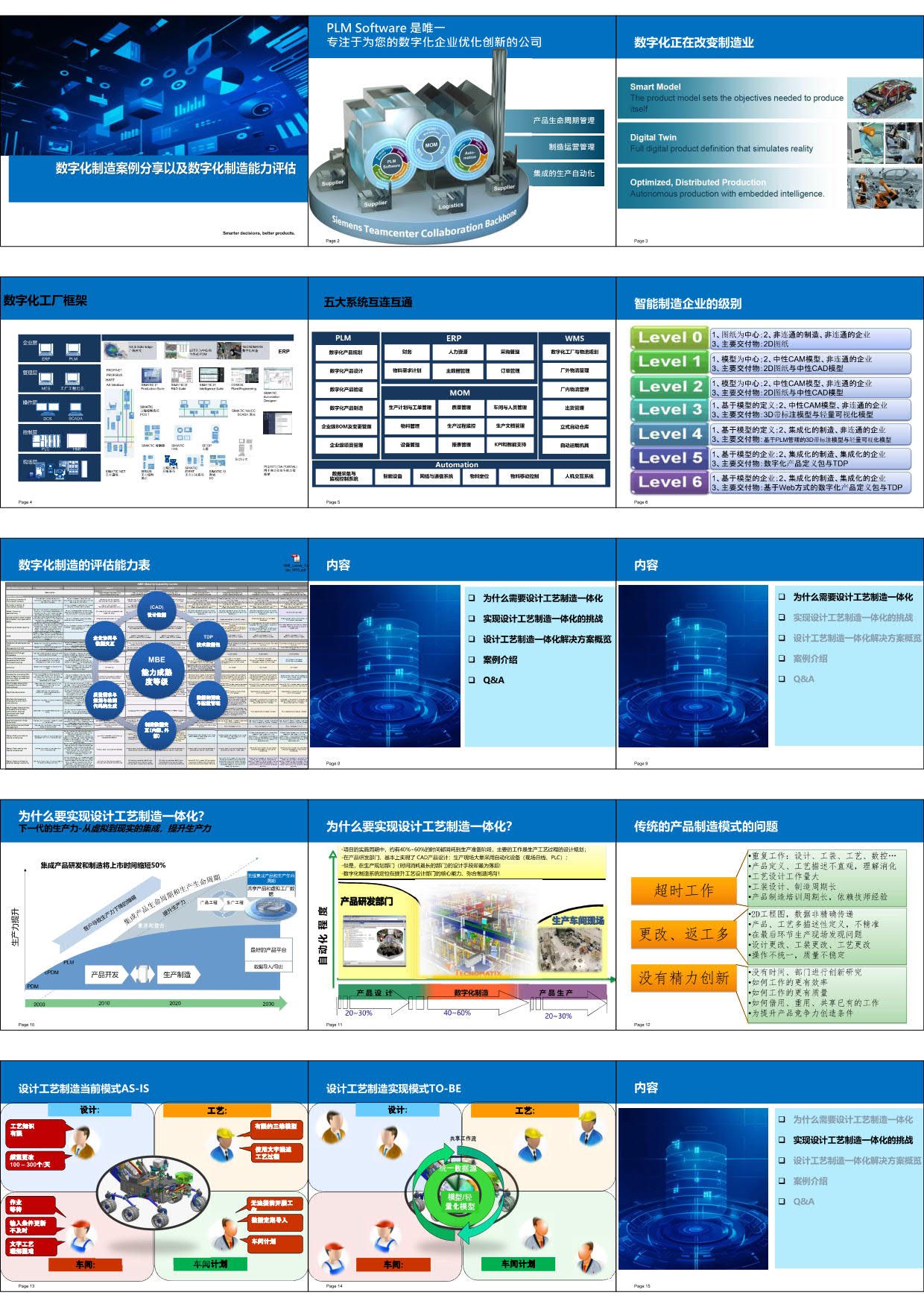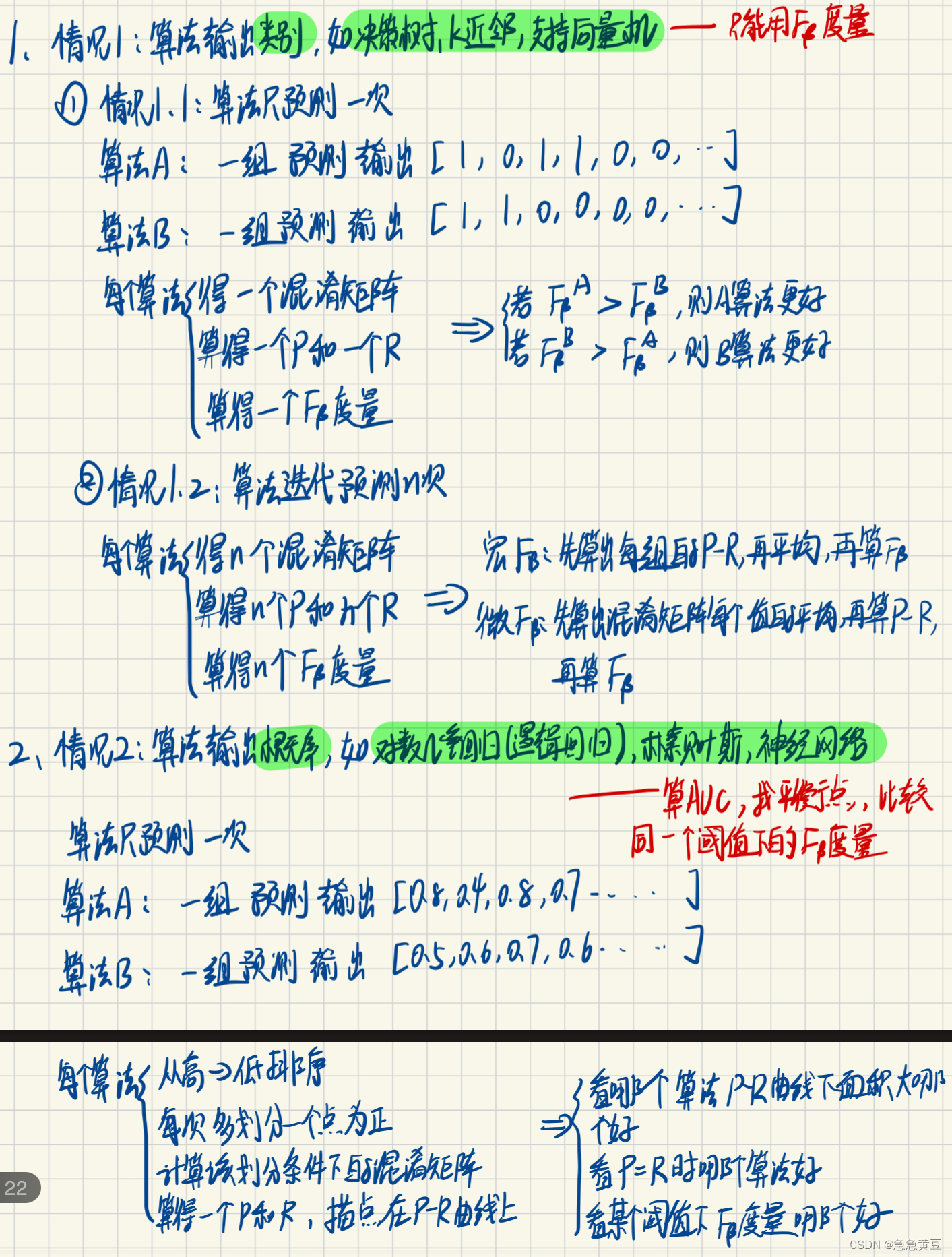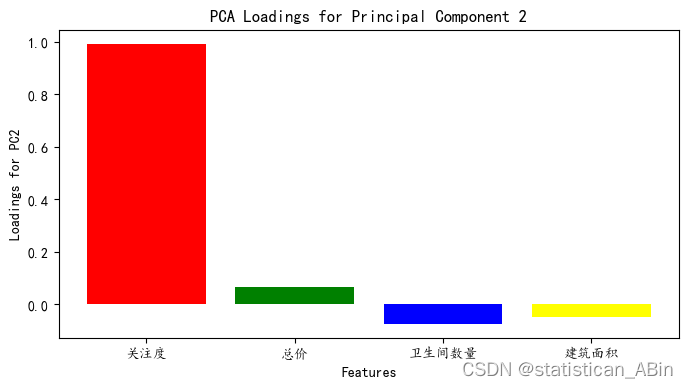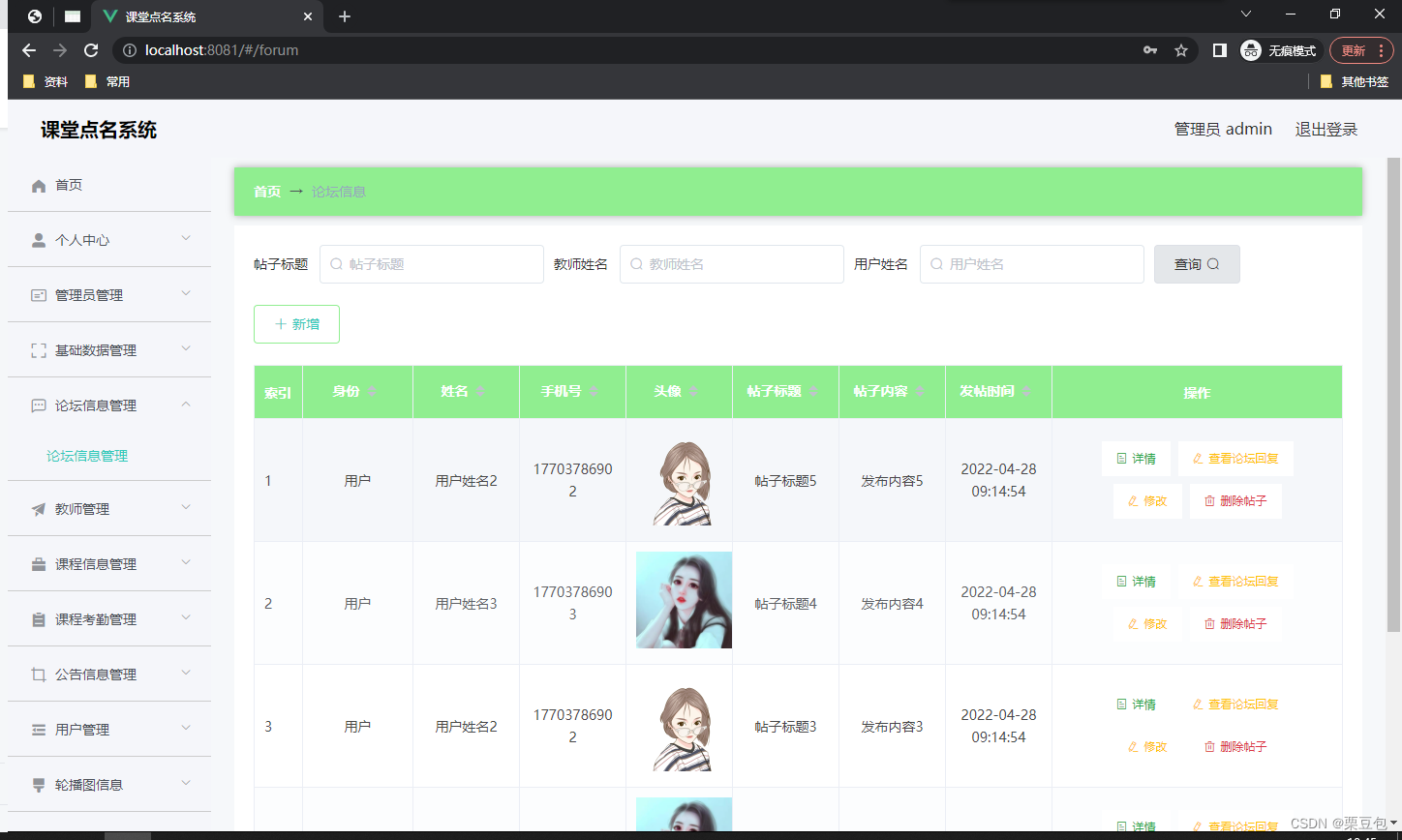R语言基础图形合集
欢迎大家关注全网生信学习者系列:
- WX公zhong号:生信学习者
- Xiao hong书:生信学习者
- 知hu:生信学习者
- CDSN:生信学习者2
基础图形可视化
数据分析的图形可视化是了解数据分布、波动和相关性等属性必不可少的手段。不同的图形类型对数据属性的表征各不相同,通常具体问题使用具体的可视化图形。R语言在可视化方面具有极大的优势,因其本身就是统计学家为了研究统计问题开发的编程语言,因此极力推荐使用R语言可视化数据。
散点图
散点图是由x值和y值确定的点散乱分布在坐标轴上,一是可以用来展示数据的分布和聚合情况,二是可通过分布情况得到x和y之间的趋势结论。多用于回归分析,发现自变量和因变量的变化趋势,进而选择合适的函数对数据点进行拟合。
library(ggplot2)
library(dplyr)dat <- %>% mutate(cyl = factor(cyl))
ggplot(dat, aes(x = wt, y = mpg, shape = cyl, color = cyl)) + geom_point(size = 3, alpha = 0.4) + geom_smooth(method = lm, linetype = "dashed", color = "darkred", fill = "blue") + geom_text(aes(label = rownames(dat)), size = 4) + theme_bw(base_size = 12) + theme(plot.title = element_text(size = 10, color = "black", face = "bold", hjust = 0.5), axis.title = element_text(size = 10, color = "black", face = "bold"), axis.text = element_text(size = 9, color = "black"), axis.ticks.length = unit(-0.05, "in"), axis.text.y = element_text(margin = unit(c(0.3, 0.3, 0.3, 0.3), "cm"), size = 9), axis.text.x = element_blank(), text = element_text(size = 8, color = "black"), strip.text = element_text(size = 9, color = "black", face = "bold"), panel.grid = element_blank())

直方图
直方图是一种对数据分布情况进行可视化的图形,它是二维统计图表,对应两个坐标分别是统计样本以及该样本对应的某个属性如频率等度量。
library(ggplot2)data <- data.frame(Conpany = c("Apple", "Google", "Facebook", "Amozon", "Tencent"), Sale2013 = c(5000, 3500, 2300, 2100, 3100), Sale2014 = c(5050, 3800, 2900, 2500, 3300), Sale2015 = c(5050, 3800, 2900, 2500, 3300), Sale2016 = c(5050, 3800, 2900, 2500, 3300))
mydata <- tidyr::gather(data, Year, Sale, -Conpany)
ggplot(mydata, aes(Conpany, Sale, fill = Year)) + geom_bar(stat = "identity", position = "dodge") +guides(fill = guide_legend(title = NULL)) + ggtitle("The Financial Performance of Five Giant") + scale_fill_wsj("rgby", "") + theme_wsj() + theme(axis.ticks.length = unit(0.5, "cm"), axis.title = element_blank()))

library(patternplot)data <- read.csv(system.file("extdata", "monthlyexp.csv", package = "patternplot"))
data <- data[which(data$City == "City 1"), ]
x <- factor(data$Type, c("Housing", "Food", "Childcare"))
y <- data$Monthly_Expenses
pattern.type <- c("hdashes", "blank", "crosshatch")
pattern.color <- c("black", "black", "black")
background.color <- c("white", "white", "white")
density <- c(20, 20, 10)patternplot::patternbar(data, x, y, group = NULL, ylab = "Monthly Expenses, Dollar", pattern.type = pattern.type, pattern.color = pattern.color,background.color = background.color, pattern.line.size = 0.5, frame.color = c("black", "black", "black"), density = density) +
ggtitle("(A) Black and White with Patterns"))

箱线图
箱线图是一种显示一组数据分布情况的统计图,它形状像箱子因此被也被称为箱形图。它通过六个数据节点将一组数据从大到小排列(上极限到下极限),反应原始数据分布特征。意义在于发现关键数据如平均值、任何异常值、数据分布紧密度和偏分布等。
library(ggplot2)
library(dplyr)pr <- unique(dat$Fruit)
grp.col <- c("#999999", "#E69F00", "#56B4E9")dat %>% mutate(Fruit = factor(Fruit)) %>% ggplot(aes(x = Fruit, y = Weight, color = Fruit)) + stat_boxplot(geom = "errorbar", width = 0.15) + geom_boxplot(aes(fill = Fruit), width = 0.4, outlier.colour = "black", outlier.shape = 21, outlier.size = 1) + stat_summary(fun.y = mean, geom = "point", shape = 16,size = 2, color = "black") +# 在顶部显示每组的数目stat_summary(fun.data = function(x) {return(data.frame(y = 0.98 * 120, label = length(x)))}, geom = "text", hjust = 0.5, color = "red", size = 6) + stat_compare_means(comparisons = list(c(pr[1], pr[2]), c(pr[1], pr[3]), c(pr[2], pr[3])),label = "p.signif", method = "wilcox.test") + labs(title = "Weight of Fruit", x = "Fruit", y = "Weight (kg)") +scale_color_manual(values = grp.col, labels = pr) +scale_fill_manual(values = grp.col, labels = pr) + guides(color = F, fil = F) + scale_y_continuous(sec.axis = dup_axis(label = NULL, name = NULL),breaks = seq(90, 108, 2), limits = c(90, 120)) + theme_bw(base_size = 12) + theme(plot.title = element_text(size = 10, color = "black", face = "bold", hjust = 0.5),axis.title = element_text(size = 10, color = "black", face = "bold"), axis.text = element_text(size = 9, color = "black"),axis.ticks.length = unit(-0.05, "in"), axis.text.y = element_text(margin = unit(c(0.3, 0.3, 0.3, 0.3), "cm"), size = 9),axis.text.x = element_text(margin = unit(c(0.3, 0.3, 0.3, 0.3), "cm")),text = element_text(size = 8, color = "black"),strip.text = element_text(size = 9, color = "black", face = "bold"),panel.grid = element_blank())

面积图
面积图是一种展示个体与整体的关系的统计图,更多用于时间序列变化的研究。
library(ggplot2)
library(dplyr)dat %>% group_by(Fruit, Store) %>%
summarize(mean_Weight = mean(Weight)) %>% ggplot(aes(x = Store, group = Fruit)) + geom_area(aes(y = mean_Weight, fill = as.factor(Fruit)), position = "stack", linetype = "dashed") + geom_hline(aes(yintercept = mean(mean_Weight)), color = "blue", linetype = "dashed", size = 1) + guides(fill = guide_legend(title = NULL)) + theme_bw(base_size = 12) + theme(plot.title = element_text(size = 10, color = "black", face = "bold", hjust = 0.5), axis.title = element_text(size = 10, color = "black", face = "bold"), axis.text = element_text(size = 9, color = "black"), axis.ticks.length = unit(-0.05, "in"), axis.text.y = element_text(margin = unit(c(0.3, 0.3, 0.3, 0.3), "cm"), size = 9), axis.text.x = element_text(margin = unit(c(0.3, 0.3, 0.3, 0.3), "cm")), text = element_text(size = 8, color = "black"), strip.text = element_text(size = 9, color = "black", face = "bold"), panel.grid = element_blank())

热图
热图也是一种对数据分布情况可视化的统计图形,如下图表现得是数据差异性的具象化实例。一般用于样本聚类等可视化过程。在基因表达或者丰度表达差异研究中,热图既可以展现数据质量间的差异性,也可以用于聚类等。
library(ggplot2)data <- as.data.frame(matrix(rnorm(9 * 10), 9, 10))
rownames(data) <- paste("Gene", 1:9, sep = "_")
colnames(data) <- paste("sample", 1:10, sep = "_")
data$ID <- rownames(data)
data_m <- tidyr::gather(data, sampleID, value, -ID)ggplot(data_m, aes(x = sampleID, y = ID)) + geom_tile(aes(fill = value)) + scale_fill_gradient2("Expression", low = "green", high = "red", mid = "black") + xlab("samples") + theme_classic() + theme(axis.ticks = element_blank(), axis.line = element_blank(), panel.grid.major = element_blank(),legend.key = element_blank(), axis.text.x = element_text(angle = 45, hjust = 1, vjust = 1),legend.position = "top")

相关图
相关图是热图的一种特殊形式,展示的是样本间相关系数大小的热图。
library(corrplot)corrplot(corr = cor(dat[1:7]), order = "AOE", type = "upper", tl.pos = "d")
corrplot(corr = cor(dat[1:7]), add = TRUE, type = "lower", method = "number", order = "AOE", diag = FALSE, tl.pos = "n", cl.pos = "n")

折线图
折线图是反应数据分布趋势的可视化图形,其本质和堆积图或者说面积图有些相似。
library(ggplot2)
library(dplyr)grp.col <- c("#999999", "#E69F00", "#56B4E9")
dat.cln <- sampling::strata(dat, stratanames = "Fruit", size = rep(round(nrow(dat) * 0.1/3, -1), 3), method = "srswor")dat %>% slice(dat.cln$ID_unit) %>% mutate(Year = as.character(rep(1996:2015, times = 3))) %>% mutate(Year = factor(as.character(Year))) %>% ggplot(aes(x = Year, y = Weight, linetype = Fruit, colour = Fruit, shape = Fruit, fill = Fruit)) + geom_line(aes(group = Fruit)) + geom_point() + scale_linetype_manual(values = c(1:3)) + scale_shape_manual(values = c(19, 21, 23)) +scale_color_manual(values = grp.col, labels = pr) + scale_fill_manual(values = grp.col, labels = pr) + theme_bw() + theme(plot.title = element_text(size = 10, color = "black", face = "bold", hjust = 0.5),axis.title = element_text(size = 10, color = "black", face = "bold"), axis.text = element_text(size = 9, color = "black"),axis.ticks.length = unit(-0.05, "in"), axis.text.y = element_text(margin = unit(c(0.3, 0.3, 0.3, 0.3), "cm"), size = 9),axis.text.x = element_text(margin = unit(c(0.3, 0.3, 0.3, 0.3), "cm")),text = element_text(size = 8, color = "black"),strip.text = element_text(size = 9, color = "black", face = "bold"), panel.grid = element_blank())

韦恩图
韦恩图是一种展示不同分组之间集合重叠区域的可视化图。
library(VennDiagram)A <- sample(LETTERS, 18, replace = FALSE)
B <- sample(LETTERS, 18, replace = FALSE)
C <- sample(LETTERS, 18, replace = FALSE)
D <- sample(LETTERS, 18, replace = FALSE)venn.diagram(x = list(A = A, D = D, B = B, C = C),filename = "Group4.png", height = 450, width = 450, resolution = 300, imagetype = "png", col = "transparent", fill = c("cornflowerblue", "green", "yellow", "darkorchid1"),alpha = 0.5, cex = 0.45, cat.cex = 0.45)

library(ggplot2)
library(UpSetR)movies <- read.csv(system.file("extdata", "movies.csv", package = "UpSetR"), header = T, sep = ";")
mutations <- read.csv(system.file("extdata", "mutations.csv", package = "UpSetR"), header = T, sep = ",")another.plot <- function(data, x, y) {round_any_new <- function(x, accuracy, f = round) {f(x/accuracy) * accuracy}data$decades <- round_any_new(as.integer(unlist(data[y])), 10, ceiling)data <- data[which(data$decades >= 1970), ]myplot <- (ggplot(data, aes_string(x = x)) + geom_density(aes(fill = factor(decades)), alpha = 0.4) + theme_bw() + theme(plot.margin = unit(c(0, 0, 0, 0), "cm"), legend.key.size = unit(0.4, "cm")))
}upset(movies, main.bar.color = "black", mb.ratio = c(0.5, 0.5), queries = list(list(query = intersects, params = list("Drama"),color = "red", active = F), list(query = intersects, params = list("Action", "Drama"), active = T),list(query = intersects, params = list("Drama", "Comedy", "Action"),color = "orange",active = T)), attribute.plots = list(gridrows = 50, plots = list(list(plot = histogram, x = "ReleaseDate", queries = F), list(plot = scatter_plot, x = "ReleaseDate", y = "AvgRating", queries = T), list(plot = another.plot,x = "AvgRating", y = "ReleaseDate",queries = F)),ncols = 3)))

火山图
火山图通过两个属性Fold change和P value反应两组数据的差异性。
library(ggplot2)data <- read.table(choose.files(),header = TRUE)
data$color <- ifelse(data$padj<0.05 & abs(data$log2FoldChange)>= 1,ifelse(data$log2FoldChange > 1,'red','blue'),'gray')
color <- c(red = "red",gray = "gray",blue = "blue")ggplot(data, aes(log2FoldChange, -log10(padj), col = color)) +geom_point() +theme_bw() +scale_color_manual(values = color) +labs(x="log2 (fold change)",y="-log10 (q-value)") +geom_hline(yintercept = -log10(0.05), lty=4,col="grey",lwd=0.6) +geom_vline(xintercept = c(-1, 1), lty=4,col="grey",lwd=0.6) +theme(legend.position = "none",panel.grid=element_blank(),axis.title = element_text(size = 16),axis.text = element_text(size = 14))

饼图
饼图是用于刻画分组间如频率等属性的相对关系图。
library(patternplot)data <- read.csv(system.file("extdata", "vegetables.csv", package = "patternplot"))
pattern.type <- c("hdashes", "vdashes", "bricks")
pattern.color <- c("red3", "green3", "white")
background.color <- c("dodgerblue", "lightpink", "orange")patternpie(group = data$group, pct = data$pct, label = data$label, pattern.type = pattern.type,pattern.color = pattern.color, background.color = background.color, frame.color = "grey40", pixel = 0.3, pattern.line.size = 0.3, frame.size = 1.5, label.size = 5, label.distance = 1.35) + ggtitle("(B) Colors with Patterns"))

密度曲线图
密度曲线图反应的是数据在不同区间的密度分布情况,和概率密度函数PDF曲线类似。
library(ggplot2)
library(plyr)set.seed(1234)
df <- data.frame(sex=factor(rep(c("F", "M"), each=200)),weight=round(c(rnorm(200, mean=55, sd=5),rnorm(200, mean=65, sd=5)))
)
mu <- ddply(df, "sex", summarise, grp.mean=mean(weight))ggplot(df, aes(x=weight, fill=sex)) +geom_histogram(aes(y=..density..), alpha=0.5, position="identity") +geom_density(alpha=0.4) +geom_vline(data=mu, aes(xintercept=grp.mean, color=sex),linetype="dashed") + scale_color_grey() + theme_classic()+theme(legend.position="top")

边界散点图(Scatterplot With Encircling)
library(ggplot2)
library(ggalt)
midwest_select <- midwest[midwest$poptotal > 350000 & midwest$poptotal <= 500000 & midwest$area > 0.01 & midwest$area < 0.1, ]ggplot(midwest, aes(x=area, y=poptotal)) + geom_point(aes(col=state, size=popdensity)) + # draw pointsgeom_smooth(method="loess", se=F) + xlim(c(0, 0.1)) + ylim(c(0, 500000)) + # draw smoothing linegeom_encircle(aes(x=area, y=poptotal), data=midwest_select, color="red", size=2, expand=0.08) + # encirclelabs(subtitle="Area Vs Population", y="Population", x="Area", title="Scatterplot + Encircle", caption="Source: midwest")

边缘箱图/直方图(Marginal Histogram / Boxplot)
2、边缘箱图/直方图(Marginal Histogram / Boxplot)
library(ggplot2)
library(ggExtra)
data(mpg, package="ggplot2")theme_set(theme_bw())
mpg_select <- mpg[mpg$hwy >= 35 & mpg$cty > 27, ]
g <- ggplot(mpg, aes(cty, hwy)) + geom_count() + geom_smooth(method="lm", se=F)ggMarginal(g, type = "histogram", fill="transparent")
#ggMarginal(g, type = "boxplot", fill="transparent")

拟合散点图
library(ggplot2)
theme_set(theme_bw())
data("midwest")ggplot(midwest, aes(x=area, y=poptotal)) + geom_point(aes(col=state, size=popdensity)) + geom_smooth(method="loess", se=F) + xlim(c(0, 0.1)) + ylim(c(0, 500000)) + labs(subtitle="Area Vs Population", y="Population", x="Area", title="Scatterplot", caption = "Source: midwest")

相关系数图(Correlogram)
library(ggplot2)
library(ggcorrplot)data(mtcars)
corr <- round(cor(mtcars), 1)ggcorrplot(corr, hc.order = TRUE, type = "lower", lab = TRUE, lab_size = 3, method="circle", colors = c("tomato2", "white", "springgreen3"), title="Correlogram of mtcars", ggtheme=theme_bw)

水平发散型文本(Diverging Texts)
library(ggplot2)
library(dplyr)
library(tibble)
theme_set(theme_bw()) # Data Prep
data("mtcars")plotdata <- mtcars %>% rownames_to_column("car_name") %>%mutate(mpg_z=round((mpg - mean(mpg))/sd(mpg), 2),mpg_type=ifelse(mpg_z < 0, "below", "above")) %>%arrange(mpg_z)
plotdata$car_name <- factor(plotdata$car_name, levels = as.character(plotdata$car_name))ggplot(plotdata, aes(x=car_name, y=mpg_z, label=mpg_z)) + geom_bar(stat='identity', aes(fill=mpg_type), width=.5) +scale_fill_manual(name="Mileage", labels = c("Above Average", "Below Average"), values = c("above"="#00ba38", "below"="#f8766d")) + labs(subtitle="Normalised mileage from 'mtcars'", title= "Diverging Bars") + coord_flip()

水平棒棒糖图(Diverging Lollipop Chart)
ggplot(plotdata, aes(x=car_name, y=mpg_z, label=mpg_z)) + geom_point(stat='identity', fill="black", size=6) +geom_segment(aes(y = 0, x = car_name, yend = mpg_z, xend = car_name), color = "black") +geom_text(color="white", size=2) +labs(title="Diverging Lollipop Chart", subtitle="Normalized mileage from 'mtcars': Lollipop") + ylim(-2.5, 2.5) +coord_flip()

去棒棒糖图(Diverging Dot Plot)
ggplot(plotdata, aes(x=car_name, y=mpg_z, label=mpg_z)) + geom_point(stat='identity', aes(col=mpg_type), size=6) +scale_color_manual(name="Mileage", labels = c("Above Average", "Below Average"), values = c("above"="#00ba38", "below"="#f8766d")) + geom_text(color="white", size=2) +labs(title="Diverging Dot Plot", subtitle="Normalized mileage from 'mtcars': Dotplot") + ylim(-2.5, 2.5) +coord_flip()
面积图(Area Chart)
library(ggplot2)
library(quantmod)
data("economics", package = "ggplot2")economics$returns_perc <- c(0, diff(economics$psavert)/economics$psavert[-length(economics$psavert)])brks <- economics$date[seq(1, length(economics$date), 12)]
lbls <- lubridate::year(economics$date[seq(1, length(economics$date), 12)])ggplot(economics[1:100, ], aes(date, returns_perc)) + geom_area() + scale_x_date(breaks=brks, labels=lbls) + theme(axis.text.x = element_text(angle=90)) + labs(title="Area Chart", subtitle = "Perc Returns for Personal Savings", y="% Returns for Personal savings", caption="Source: economics")

排序条形图(Ordered Bar Chart)
cty_mpg <- aggregate(mpg$cty, by=list(mpg$manufacturer), FUN=mean)
colnames(cty_mpg) <- c("make", "mileage")
cty_mpg <- cty_mpg[order(cty_mpg$mileage), ]
cty_mpg$make <- factor(cty_mpg$make, levels = cty_mpg$make) library(ggplot2)
theme_set(theme_bw())ggplot(cty_mpg, aes(x=make, y=mileage)) + geom_bar(stat="identity", width=.5, fill="tomato3") + labs(title="Ordered Bar Chart", subtitle="Make Vs Avg. Mileage", caption="source: mpg") + theme(axis.text.x = element_text(angle=65, vjust=0.6))

直方图(Histogram)
library(ggplot2)
theme_set(theme_classic())g <- ggplot(mpg, aes(displ)) + scale_fill_brewer(palette = "Spectral")g + geom_histogram(aes(fill=class), binwidth = .1, col="black", size=.1) + # change binwidthlabs(title="Histogram with Auto Binning", subtitle="Engine Displacement across Vehicle Classes")

g + geom_histogram(aes(fill=class), bins=5, col="black", size=.1) + # change number of binslabs(title="Histogram with Fixed Bins", subtitle="Engine Displacement across Vehicle Classes")

library(ggplot2)
theme_set(theme_classic())g <- ggplot(mpg, aes(manufacturer))
g + geom_bar(aes(fill=class), width = 0.5) + theme(axis.text.x = element_text(angle=65, vjust=0.6)) + labs(title="Histogram on Categorical Variable", subtitle="Manufacturer across Vehicle Classes")

核密度图(Density plot)
library(ggplot2)
theme_set(theme_classic())g <- ggplot(mpg, aes(cty))
g + geom_density(aes(fill=factor(cyl)), alpha=0.8) + labs(title="Density plot", subtitle="City Mileage Grouped by Number of cylinders",caption="Source: mpg",x="City Mileage",fill="# Cylinders")

点图结合箱图(Dot + Box Plot)
library(ggplot2)
theme_set(theme_bw())# plot
g <- ggplot(mpg, aes(manufacturer, cty))
g + geom_boxplot() + geom_dotplot(binaxis='y', stackdir='center', dotsize = .5, fill="red") +theme(axis.text.x = element_text(angle=65, vjust=0.6)) + labs(title="Box plot + Dot plot", subtitle="City Mileage vs Class: Each dot represents 1 row in source data",caption="Source: mpg",x="Class of Vehicle",y="City Mileage")

小提琴图(Violin Plot)
library(ggplot2)
theme_set(theme_bw())# plot
g <- ggplot(mpg, aes(class, cty))
g + geom_violin() + labs(title="Violin plot", subtitle="City Mileage vs Class of vehicle",caption="Source: mpg",x="Class of Vehicle",y="City Mileage")

饼图
library(ggplot2)
theme_set(theme_classic())# Source: Frequency table
df <- as.data.frame(table(mpg$class))
colnames(df) <- c("class", "freq")
pie <- ggplot(df, aes(x = "", y=freq, fill = factor(class))) + geom_bar(width = 1, stat = "identity") +theme(axis.line = element_blank(), plot.title = element_text(hjust=0.5)) + labs(fill="class", x=NULL, y=NULL, title="Pie Chart of class", caption="Source: mpg")pie + coord_polar(theta = "y", start=0)

时间序列图(Time Series多图)
## From Timeseries object (ts)
library(ggplot2)
library(ggfortify)
theme_set(theme_classic())# Plot
autoplot(AirPassengers) + labs(title="AirPassengers") + theme(plot.title = element_text(hjust=0.5))

library(ggplot2)
theme_set(theme_classic())# Allow Default X Axis Labels
ggplot(economics, aes(x=date)) + geom_line(aes(y=returns_perc)) + labs(title="Time Series Chart", subtitle="Returns Percentage from 'Economics' Dataset", caption="Source: Economics", y="Returns %")

data(economics_long, package = "ggplot2")
library(ggplot2)
library(lubridate)
theme_set(theme_bw())df <- economics_long[economics_long$variable %in% c("psavert", "uempmed"), ]
df <- df[lubridate::year(df$date) %in% c(1967:1981), ]# labels and breaks for X axis text
brks <- df$date[seq(1, length(df$date), 12)]
lbls <- lubridate::year(brks)# plot
ggplot(df, aes(x=date)) + geom_line(aes(y=value, col=variable)) + labs(title="Time Series of Returns Percentage", subtitle="Drawn from Long Data format", caption="Source: Economics", y="Returns %", color=NULL) + # title and captionscale_x_date(labels = lbls, breaks = brks) + # change to monthly ticks and labelsscale_color_manual(labels = c("psavert", "uempmed"), values = c("psavert"="#00ba38", "uempmed"="#f8766d")) + # line colortheme(axis.text.x = element_text(angle = 90, vjust=0.5, size = 8), # rotate x axis textpanel.grid.minor = element_blank()) # turn off minor grid

堆叠面积图(Stacked Area Chart)
library(ggplot2)
library(lubridate)
theme_set(theme_bw())df <- economics[, c("date", "psavert", "uempmed")]
df <- df[lubridate::year(df$date) %in% c(1967:1981), ]# labels and breaks for X axis text
brks <- df$date[seq(1, length(df$date), 12)]
lbls <- lubridate::year(brks)# plot
ggplot(df, aes(x=date)) + geom_area(aes(y=psavert+uempmed, fill="psavert")) + geom_area(aes(y=uempmed, fill="uempmed")) + labs(title="Area Chart of Returns Percentage", subtitle="From Wide Data format", caption="Source: Economics", y="Returns %") + # title and captionscale_x_date(labels = lbls, breaks = brks) + # change to monthly ticks and labelsscale_fill_manual(name="", values = c("psavert"="#00ba38", "uempmed"="#f8766d")) + # line colortheme(panel.grid.minor = element_blank()) # turn off minor grid

分层树形图(Hierarchical Dendrogram)
library(ggplot2)
library(ggdendro)
theme_set(theme_bw())hc <- hclust(dist(USArrests), "ave") # hierarchical clustering# plot
ggdendrogram(hc, rotate = TRUE, size = 2)

聚类图(Clusters)
library(ggplot2)
library(ggalt)
library(ggfortify)
theme_set(theme_classic())# Compute data with principal components ------------------
df <- iris[c(1, 2, 3, 4)]
pca_mod <- prcomp(df) # compute principal components# Data frame of principal components ----------------------
df_pc <- data.frame(pca_mod$x, Species=iris$Species) # dataframe of principal components
df_pc_vir <- df_pc[df_pc$Species == "virginica", ] # df for 'virginica'
df_pc_set <- df_pc[df_pc$Species == "setosa", ] # df for 'setosa'
df_pc_ver <- df_pc[df_pc$Species == "versicolor", ] # df for 'versicolor'# Plot ----------------------------------------------------
ggplot(df_pc, aes(PC1, PC2, col=Species)) + geom_point(aes(shape=Species), size=2) + # draw pointslabs(title="Iris Clustering", subtitle="With principal components PC1 and PC2 as X and Y axis",caption="Source: Iris") + coord_cartesian(xlim = 1.2 * c(min(df_pc$PC1), max(df_pc$PC1)), ylim = 1.2 * c(min(df_pc$PC2), max(df_pc$PC2))) + # change axis limitsgeom_encircle(data = df_pc_vir, aes(x=PC1, y=PC2)) + # draw circlesgeom_encircle(data = df_pc_set, aes(x=PC1, y=PC2)) + geom_encircle(data = df_pc_ver, aes(x=PC1, y=PC2))

气泡图
# Libraries
library(ggplot2)
library(dplyr)
library(plotly)
library(viridis)
library(hrbrthemes)# The dataset is provided in the gapminder library
library(gapminder)
data <- gapminder %>% filter(year=="2007") %>% dplyr::select(-year)# Interactive version
p <- data %>%mutate(gdpPercap=round(gdpPercap,0)) %>%mutate(pop=round(pop/1000000,2)) %>%mutate(lifeExp=round(lifeExp,1)) %>%# Reorder countries to having big bubbles on toparrange(desc(pop)) %>%mutate(country = factor(country, country)) %>%# prepare text for tooltipmutate(text = paste("Country: ", country, "\nPopulation (M): ", pop, "\nLife Expectancy: ", lifeExp, "\nGdp per capita: ", gdpPercap, sep="")) %>%# Classic ggplotggplot( aes(x=gdpPercap, y=lifeExp, size = pop, color = continent, text=text)) +geom_point(alpha=0.7) +scale_size(range = c(1.4, 19), name="Population (M)") +scale_color_viridis(discrete=TRUE, guide=FALSE) +theme_ipsum() +theme(legend.position="none")# turn ggplot interactive with plotly
pp <- ggplotly(p, tooltip="text")
pp

小提琴图Violin
# Libraries
library(ggplot2)
library(dplyr)
library(hrbrthemes)
library(viridis)# create a dataset
data <- data.frame(name=c( rep("A",500), rep("B",500), rep("B",500), rep("C",20), rep('D', 100) ),value=c( rnorm(500, 10, 5), rnorm(500, 13, 1), rnorm(500, 18, 1), rnorm(20, 25, 4), rnorm(100, 12, 1) )
)# sample size
sample_size = data %>% group_by(name) %>% summarize(num=n())# Plot
data %>%left_join(sample_size) %>%mutate(myaxis = paste0(name, "\n", "n=", num)) %>%ggplot( aes(x=myaxis, y=value, fill=name)) +geom_violin(width=1.4) +geom_boxplot(width=0.1, color="grey", alpha=0.2) +scale_fill_viridis(discrete = TRUE) +theme_ipsum() +theme(legend.position="none",plot.title = element_text(size=11)) +ggtitle("A Violin wrapping a boxplot") +xlab("")

# Libraries
library(ggplot2)
library(dplyr)
library(tidyr)
library(forcats)
library(hrbrthemes)
library(viridis)# Load dataset from github
data <- read.table("dataset/viz/probly.csv", header=TRUE, sep=",")# Data is at wide format, we need to make it 'tidy' or 'long'
data <- data %>% gather(key="text", value="value") %>%mutate(text = gsub("\\.", " ",text)) %>%mutate(value = round(as.numeric(value),0)) %>%filter(text %in% c("Almost Certainly","Very Good Chance","We Believe","Likely","About Even", "Little Chance", "Chances Are Slight", "Almost No Chance"))# Plot
p <- data %>%mutate(text = fct_reorder(text, value)) %>% # Reorder dataggplot( aes(x=text, y=value, fill=text, color=text)) +geom_violin(width=2.1, size=0.2) +scale_fill_viridis(discrete=TRUE) +scale_color_viridis(discrete=TRUE) +theme_ipsum() +theme(legend.position="none") +coord_flip() + # This switch X and Y axis and allows to get the horizontal versionxlab("") +ylab("Assigned Probability (%)")p

核密度图 density chart
library(ggplot2)
library(hrbrthemes)
library(dplyr)
library(tidyr)
library(viridis)data <- read.table("dataset/viz/probly.csv", header=TRUE, sep=",")
data <- data %>%gather(key="text", value="value") %>%mutate(text = gsub("\\.", " ",text)) %>%mutate(value = round(as.numeric(value),0))# A dataframe for annotations
annot <- data.frame(text = c("Almost No Chance", "About Even", "Probable", "Almost Certainly"),x = c(5, 53, 65, 79),y = c(0.15, 0.4, 0.06, 0.1)
)# Plot
data %>%filter(text %in% c("Almost No Chance", "About Even", "Probable", "Almost Certainly")) %>%ggplot( aes(x=value, color=text, fill=text)) +geom_density(alpha=0.6) +scale_fill_viridis(discrete=TRUE) +scale_color_viridis(discrete=TRUE) +geom_text( data=annot, aes(x=x, y=y, label=text, color=text), hjust=0, size=4.5) +theme_ipsum() +theme(legend.position="none") +ylab("") +xlab("Assigned Probability (%)")

# library
library(ggplot2)
library(ggExtra)# classic plot :
p <- ggplot(mtcars, aes(x=wt, y=mpg, color=cyl, size=cyl)) +geom_point() +theme(legend.position="none")# Set relative size of marginal plots (main plot 10x bigger than marginals)
p1 <- ggMarginal(p, type="histogram", size=10)# Custom marginal plots:
p2 <- ggMarginal(p, type="histogram", fill = "slateblue", xparams = list( bins=10))# Show only marginal plot for x axis
p3 <- ggMarginal(p, margins = 'x', color="purple", size=4)cowplot::plot_grid(p, p1, p2, p3, ncol = 2, align = "hv", labels = LETTERS[1:4])

柱状图 histogram
# library
library(ggplot2)
library(dplyr)
library(hrbrthemes)# Build dataset with different distributions
data <- data.frame(type = c( rep("variable 1", 1000), rep("variable 2", 1000) ),value = c( rnorm(1000), rnorm(1000, mean=4) )
)# Represent it
p <- data %>%ggplot( aes(x=value, fill=type)) +geom_histogram( color="#e9ecef", alpha=0.6, position = 'identity') +scale_fill_manual(values=c("#69b3a2", "#404080")) +theme_ipsum() +labs(fill="")
p

# Libraries
library(ggplot2)
library(hrbrthemes)# Dummy data
data <- data.frame(var1 = rnorm(1000),var2 = rnorm(1000, mean=2)
)# Chart
p <- ggplot(data, aes(x=x) ) +# Topgeom_density( aes(x = var1, y = ..density..), fill="#69b3a2" ) +geom_label( aes(x=4.5, y=0.25, label="variable1"), color="#69b3a2") +# Bottomgeom_density( aes(x = var2, y = -..density..), fill= "#404080") +geom_label( aes(x=4.5, y=-0.25, label="variable2"), color="#404080") +theme_ipsum() +xlab("value of x")p1 <- ggplot(data, aes(x=x) ) +geom_histogram( aes(x = var1, y = ..density..), fill="#69b3a2" ) +geom_label( aes(x=4.5, y=0.25, label="variable1"), color="#69b3a2") +geom_histogram( aes(x = var2, y = -..density..), fill= "#404080") +geom_label( aes(x=4.5, y=-0.25, label="variable2"), color="#404080") +theme_ipsum() +xlab("value of x")
cowplot::plot_grid(p, p1, ncol = 2, align = "hv", labels = LETTERS[1:2])

箱线图 boxplot
# Library
library(ggplot2)
library(dplyr)
library(forcats)# Dataset 1: one value per group
data <- data.frame(name=c("north","south","south-east","north-west","south-west","north-east","west","east"),val=sample(seq(1,10), 8 )
)# Reorder following the value of another column:
p1 <- data %>%mutate(name = fct_reorder(name, val)) %>%ggplot( aes(x=name, y=val)) +geom_bar(stat="identity", fill="#f68060", alpha=.6, width=.4) +coord_flip() +xlab("") +theme_bw()# Reverse side
p2 <- data %>%mutate(name = fct_reorder(name, desc(val))) %>%ggplot( aes(x=name, y=val)) +geom_bar(stat="identity", fill="#f68060", alpha=.6, width=.4) +coord_flip() +xlab("") +theme_bw()# Using median
p3 <- mpg %>%mutate(class = fct_reorder(class, hwy, .fun='median')) %>%ggplot( aes(x=reorder(class, hwy), y=hwy, fill=class)) + geom_boxplot() +geom_jitter(color="black", size=0.4, alpha=0.9) +xlab("class") +theme(legend.position="none") +xlab("")# Using number of observation per group
p4 <- mpg %>%mutate(class = fct_reorder(class, hwy, .fun='length' )) %>%ggplot( aes(x=class, y=hwy, fill=class)) + stat_summary(fun.y=mean, geom="point", shape=20, size=6, color="red", fill="red") +geom_boxplot() +xlab("class") +theme(legend.position="none") +xlab("") +xlab("")p5 <- data %>%arrange(val) %>% # First sort by val. This sort the dataframe but NOT the factor levelsmutate(name=factor(name, levels=name)) %>% # This trick update the factor levelsggplot( aes(x=name, y=val)) +geom_segment( aes(xend=name, yend=0)) +geom_point( size=4, color="orange") +coord_flip() +theme_bw() +xlab("")p6 <- data %>%arrange(val) %>%mutate(name = factor(name, levels=c("north", "north-east", "east", "south-east", "south", "south-west", "west", "north-west"))) %>%ggplot( aes(x=name, y=val)) +geom_segment( aes(xend=name, yend=0)) +geom_point( size=4, color="orange") +theme_bw() +xlab("")cowplot::plot_grid(p1, p2, p3, p4, p5, p6, ncol = 2, align = "hv", labels = LETTERS[1:6])

library(dplyr)
# Dummy data
names <- c(rep("A", 20) , rep("B", 8) , rep("C", 30), rep("D", 80))
value <- c( sample(2:5, 20 , replace=T) , sample(4:10, 8 , replace=T), sample(1:7, 30 , replace=T), sample(3:8, 80 , replace=T) )
data <- data.frame(names, value) %>%mutate(names=factor(names))# Draw the boxplot. Note result is also stored in a object called boundaries
boundaries <- boxplot(data$value ~ data$names , col="#69b3a2" , ylim=c(1,11))
# Now you can type boundaries$stats to get the boundaries of the boxes# Add sample size on top
nbGroup <- nlevels(data$names)
text( x=c(1:nbGroup), y=boundaries$stats[nrow(boundaries$stats),] + 0.5, paste("n = ",table(data$names),sep="")
)

山脊图 ridgeline
# library
library(ggridges)
library(ggplot2)
library(dplyr)
library(tidyr)
library(forcats)# Load dataset from github
data <- read.table("dataset/viz/probly.csv", header=TRUE, sep=",")
data <- data %>% gather(key="text", value="value") %>%mutate(text = gsub("\\.", " ",text)) %>%mutate(value = round(as.numeric(value),0)) %>%filter(text %in% c("Almost Certainly","Very Good Chance","We Believe","Likely","About Even", "Little Chance", "Chances Are Slight", "Almost No Chance"))# Plot
p1 <- data %>%mutate(text = fct_reorder(text, value)) %>%ggplot( aes(y=text, x=value, fill=text)) +geom_density_ridges(alpha=0.6, stat="binline", bins=20) +theme_ridges() +theme(legend.position="none",panel.spacing = unit(0.1, "lines"),strip.text.x = element_text(size = 8)) +xlab("") +ylab("Assigned Probability (%)")p2 <- data %>%mutate(text = fct_reorder(text, value)) %>%ggplot( aes(y=text, x=value, fill=text)) +geom_density_ridges_gradient(scale = 3, rel_min_height = 0.01) +theme_ridges() +theme(legend.position="none",panel.spacing = unit(0.1, "lines"),strip.text.x = element_text(size = 8)) +xlab("") +ylab("Assigned Probability (%)")cowplot::plot_grid(p1, p2, ncol = 2, align = "hv", labels = LETTERS[1:2])

散点图 Scatterplot
library(ggplot2)
library(dplyr)ggplot(data=mtcars %>% mutate(cyl=factor(cyl)), aes(x=mpg, disp))+geom_point(aes(color=cyl), size=3)+geom_rug(col="black", alpha=0.5, size=1)+geom_smooth(method=lm , color="red", fill="#69b3a2", se=TRUE)+ geom_text(label=rownames(mtcars), nudge_x = 0.25, nudge_y = 0.25, check_overlap = T,label.size = 0.35,color = "black",family="serif")+theme_classic()+theme(axis.title = element_text(face = 'bold',color = 'black',size = 14),axis.text = element_text(color = 'black',size = 10),text = element_text(size = 8, color = "black", family="serif"),legend.position = 'right',legend.key.height = unit(0.6,'cm'),legend.text = element_text(face = "bold", color = 'black',size = 10),strip.text = element_text(face = "bold", size = 14))

热图 heatmap
library(ComplexHeatmap)
library(circlize)set.seed(123)
mat <- matrix(rnorm(100), 10)
rownames(mat) <- paste0("R", 1:10)
colnames(mat) <- paste0("C", 1:10)
column_ha <- HeatmapAnnotation(foo1 = runif(10), bar1 = anno_barplot(runif(10)))
row_ha <- rowAnnotation(foo2 = runif(10), bar2 = anno_barplot(runif(10)))col_fun <- colorRamp2(c(-2, 0, 2), c("green", "white", "red"))Heatmap(mat, name = "mat",column_title = "pre-defined distance method (1 - pearson)",column_title_side = "bottom",column_title_gp = gpar(fontsize = 10, fontface = "bold"),col = col_fun, clustering_distance_rows = "pearson",cluster_rows = TRUE, show_column_dend = FALSE,row_km = 2,column_km = 3,width = unit(6, "cm"), height = unit(6, "cm"), top_annotation = column_ha, right_annotation = row_ha)

相关图 correlogram
library(GGally)
library(ggplot2)data(flea)
ggpairs(flea, columns = 2:4, aes(colour=species))+theme_bw()+theme(axis.title = element_text(face = 'bold',color = 'black',size = 14),axis.text = element_text(color = 'black',size = 10),text = element_text(size = 8, color = "black", family="serif"),legend.position = 'right',legend.key.height = unit(0.6,'cm'),legend.text = element_text(face = "bold", color = 'black',size = 10),strip.text = element_text(face = "bold", size = 14))

气泡图 Bubble
library(ggplot2)
library(dplyr)
library(gapminder)data <- gapminder %>% filter(year=="2007") %>%dplyr::select(-year)
data %>%arrange(desc(pop)) %>%mutate(country = factor(country, country)) %>%ggplot(aes(x=gdpPercap, y=lifeExp, size=pop, color=continent)) +geom_point(alpha=0.5) +scale_size(range = c(.1, 24), name="Population (M)")+theme_bw()+theme(axis.title = element_text(face = 'bold',color = 'black',size = 14),axis.text = element_text(color = 'black',size = 10),text = element_text(size = 8, color = "black", family="serif"),legend.position = 'right',legend.key.height = unit(0.6,'cm'),legend.text = element_text(face = "bold", color = 'black',size = 10),strip.text = element_text(face = "bold", size = 14))

连线点图 Connected Scatterplot
library(ggplot2)
library(dplyr)
library(babynames)
library(ggrepel)
library(tidyr)data <- babynames %>% filter(name %in% c("Ashley", "Amanda")) %>%filter(sex == "F") %>%filter(year > 1970) %>%select(year, name, n) %>%spread(key = name, value=n, -1)tmp_date <- data %>% sample_frac(0.3)data %>% ggplot(aes(x=Amanda, y=Ashley, label=year)) +geom_point(color="#69b3a2") +geom_text_repel(data=tmp_date) +geom_segment(color="#69b3a2", aes(xend=c(tail(Amanda, n=-1), NA), yend=c(tail(Ashley, n=-1), NA)),arrow=arrow(length=unit(0.3,"cm")))+theme_bw()+theme(axis.title = element_text(face = 'bold',color = 'black',size = 14),axis.text = element_text(color = 'black',size = 10),text = element_text(size = 8, color = "black", family="serif"),legend.position = 'right',legend.key.height = unit(0.6,'cm'),legend.text = element_text(face = "bold", color = 'black',size = 10),strip.text = element_text(face = "bold", size = 14))

二维密度图 Density 2d
library(tidyverse)a <- data.frame( x=rnorm(20000, 10, 1.9), y=rnorm(20000, 10, 1.2) )
b <- data.frame( x=rnorm(20000, 14.5, 1.9), y=rnorm(20000, 14.5, 1.9) )
c <- data.frame( x=rnorm(20000, 9.5, 1.9), y=rnorm(20000, 15.5, 1.9) )
data <- rbind(a, b, c)pl1 <- ggplot(data, aes(x=x, y=y))+stat_density_2d(aes(fill = ..density..), geom = "raster", contour = FALSE)+scale_x_continuous(expand = c(0, 0))+scale_y_continuous(expand = c(0, 0))+scale_fill_distiller(palette=4, direction=-1)+theme(legend.position='none')pl2 <- ggplot(data, aes(x=x, y=y))+geom_hex(bins = 70) +scale_fill_continuous(type = "viridis") +theme_bw()+theme(axis.title = element_text(face = 'bold',color = 'black',size = 14),axis.text = element_text(color = 'black',size = 10),text = element_text(size = 8, color = "black", family="serif"),legend.position = 'right',legend.key.height = unit(0.6,'cm'),legend.text = element_text(face = "bold", color = 'black',size = 10),strip.text = element_text(face = "bold", size = 14)) cowplot::plot_grid(pl1, pl2, ncol = 2, align = "h", labels = LETTERS[1:2])

条形图 Barplot
library(ggplot2)
library(dplyr)data <- iris %>% select(Species, Sepal.Length) %>%group_by(Species) %>%summarise( n=n(),mean=mean(Sepal.Length),sd=sd(Sepal.Length)) %>%mutate( se=sd/sqrt(n)) %>%mutate( ic=se * qt((1-0.05)/2 + .5, n-1))ggplot(data)+geom_bar(aes(x=Species, y=mean), stat="identity", fill="skyblue", alpha=0.7)+geom_errorbar(aes(x=Species, ymin=mean-sd, ymax=mean+sd), width=0.4, colour="orange", alpha=0.9, size=1.3)+# geom_errorbar(aes(x=Species, ymin=mean-ic, ymax=mean+ic), # width=0.4, colour="orange", alpha=0.9, size=1.5)+ # geom_crossbar(aes(x=Species, y=mean, ymin=mean-sd, ymax=mean+sd), # width=0.4, colour="orange", alpha=0.9, size=1.3)+geom_pointrange(aes(x=Species, y=mean, ymin=mean-sd, ymax=mean+sd), colour="orange", alpha=0.9, size=1.3)+scale_y_continuous(expand = c(0, 0),limits = c(0, 8))+labs(x="",y="")+theme_bw()+theme(axis.title = element_text(face = 'bold',color = 'black',size = 14),axis.text = element_text(color = 'black',size = 10),text = element_text(size = 8, color = "black", family="serif"),legend.position = 'right',legend.key.height = unit(0.6,'cm'),legend.text = element_text(face = "bold", color = 'black',size = 10),strip.text = element_text(face = "bold", size = 14))

- 根据大小控制条形图宽度
library(ggplot2)data <- data.frame(group=c("A ","B ","C ","D ") , value=c(33,62,56,67) , number_of_obs=c(100,500,459,342)
)data$right <- cumsum(data$number_of_obs) + 30*c(0:(nrow(data)-1))
data$left <- data$right - data$number_of_obs ggplot(data, aes(ymin = 0))+ geom_rect(aes(xmin = left, xmax = right, ymax = value, color = group, fill = group))+xlab("number of obs")+ ylab("value")+scale_y_continuous(expand = c(0, 0),limits = c(0, 81))+ theme_bw()+theme(axis.title = element_text(face = 'bold',color = 'black',size = 14),axis.text = element_text(color = 'black',size = 10),text = element_text(size = 8, color = "black", family="serif"),legend.position = 'right',legend.key.height = unit(0.6,'cm'),legend.text = element_text(face = "bold", color = 'black',size = 10),strip.text = element_text(face = "bold", size = 14))

雷达图 radar chart
library(fmsb)set.seed(99)
data <- as.data.frame(matrix( sample( 0:20 , 15 , replace=F) , ncol=5))
colnames(data) <- c("math" , "english" , "biology" , "music" , "R-coding" )
rownames(data) <- paste("mister" , letters[1:3] , sep="-")
data <- rbind(rep(20,5) , rep(0,5) , data)colors_border <- c(rgb(0.2,0.5,0.5,0.9), rgb(0.8,0.2,0.5,0.9), rgb(0.7,0.5,0.1,0.9))
colors_in <- c(rgb(0.2,0.5,0.5,0.4), rgb(0.8,0.2,0.5,0.4), rgb(0.7,0.5,0.1,0.4) )radarchart(data, axistype=1, pcol=colors_border, pfcol=colors_in, plwd=4, plty=1,cglcol="grey", cglty=1, axislabcol="grey", caxislabels=seq(0,20,5), cglwd=0.8,vlcex=0.8)
legend(x=1.2, y=1.2, legend=rownames(data[-c(1,2),]), bty = "n", pch=20 , col=colors_in , text.col = "grey", cex=1.2, pt.cex=3)

词云 wordcloud
library(wordcloud2) wordcloud2(demoFreq, size = 2.3, minRotation = -pi/6,maxRotation = -pi/6, rotateRatio = 1)

平行坐标系统 Parallel Coordinates chart
library(hrbrthemes)
library(GGally)
library(viridis)data <- irisp1 <- ggparcoord(data,columns = 1:4, groupColumn = 5, order = "anyClass",scale="globalminmax",showPoints = TRUE, title = "No scaling",alphaLines = 0.3)+ scale_color_viridis(discrete=TRUE)+theme_ipsum()+theme(legend.position="none",plot.title = element_text(size=13))+xlab("")p2 <- ggparcoord(data,columns = 1:4, groupColumn = 5, order = "anyClass",scale="uniminmax",showPoints = TRUE, title = "Standardize to Min = 0 and Max = 1",alphaLines = 0.3)+ scale_color_viridis(discrete=TRUE)+theme_ipsum()+theme(legend.position="none",plot.title = element_text(size=13))+xlab("")p3 <- ggparcoord(data,columns = 1:4, groupColumn = 5, order = "anyClass",scale="std",showPoints = TRUE, title = "Normalize univariately (substract mean & divide by sd)",alphaLines = 0.3)+ scale_color_viridis(discrete=TRUE)+theme_ipsum()+theme(legend.position="none",plot.title = element_text(size=13))+xlab("")p4 <- ggparcoord(data,columns = 1:4, groupColumn = 5, order = "anyClass",scale="center",showPoints = TRUE, title = "Standardize and center variables",alphaLines = 0.3)+ scale_color_manual(values=c( "#69b3a2", "#E8E8E8", "#E8E8E8"))+theme_ipsum()+theme(legend.position="none",plot.title = element_text(size=13))+xlab("")cowplot::plot_grid(p1, p2, p3, p4, ncol = 2, align = "hv", labels = LETTERS[1:4])

棒棒糖图 Lollipop plot
library(ggplot2)data <- data.frame(x=LETTERS[1:26],y=abs(rnorm(26))) %>%arrange(y) %>%mutate(x=factor(x, x))p1 <- ggplot(data, aes(x=x, y=y))+geom_segment(aes(x=x, xend=x, y=1, yend=y), color="grey")+geom_point(color="orange", size=4)+xlab("") +ylab("Value of Y")+ theme_light()+theme(axis.title = element_text(face = 'bold',color = 'black',size = 14),axis.text = element_text(color = 'black',size = 10),text = element_text(size = 8, color = "black", family="serif"),panel.grid.major.x = element_blank(),panel.border = element_blank(),axis.ticks.x = element_blank(),legend.position = 'right',legend.key.height = unit(0.6, 'cm'),legend.text = element_text(face = "bold", color = 'black',size = 10),strip.text = element_text(face = "bold", size = 14)) p2 <- ggplot(data, aes(x=x, y=y))+geom_segment(aes(x=x, xend=x, y=0, yend=y), color=ifelse(data$x %in% c("A", "D"), "blue", "red"), size=ifelse(data$x %in% c("A", "D"), 1.3, 0.7) ) +geom_point(color=ifelse(data$x %in% c("A", "D"), "blue", "red"), size=ifelse(data$x %in% c("A","D"), 5, 2))+annotate("text", x=grep("D", data$x),y=data$y[which(data$x=="D")]*1.2,label="Group D is very impressive",color="orange", size=4 , angle=0, fontface="bold", hjust=0)+annotate("text", x = grep("A", data$x),y = data$y[which(data$x=="A")]*1.2,label = paste("Group A is not too bad\n (val=",data$y[which(data$x=="A")] %>% round(2),")",sep=""),color="orange", size=4 , angle=0, fontface="bold", hjust=0)+theme_ipsum()+coord_flip()+theme(legend.position="none")+xlab("")+ylab("Value of Y")+ggtitle("How did groups A and D perform?") cowplot::plot_grid(p1, p2, ncol = 2, align = "h", labels = LETTERS[1:4])

循环条形图 circular barplot
library(tidyverse)data <- data.frame(individual=paste("Mister ", seq(1,60), sep=""),group=c(rep('A', 10), rep('B', 30), rep('C', 14), rep('D', 6)) ,value=sample( seq(10,100), 60, replace=T)) %>%mutate(group=factor(group))# Set a number of 'empty bar' to add at the end of each group
empty_bar <- 3
to_add <- data.frame(matrix(NA, empty_bar*nlevels(data$group), ncol(data)))
colnames(to_add) <- colnames(data)
to_add$group <- rep(levels(data$group), each=empty_bar)
data <- rbind(data, to_add)
data <- data %>% arrange(group)
data$id <- seq(1, nrow(data))# Get the name and the y position of each label
label_data <- data
number_of_bar <- nrow(label_data)
angle <- 90 - 360 * (label_data$id-0.5) /number_of_bar
label_data$hjust <- ifelse( angle < -90, 1, 0)
label_data$angle <- ifelse(angle < -90, angle+180, angle)# prepare a data frame for base lines
base_data <- data %>% group_by(group) %>% summarize(start=min(id), end=max(id) - empty_bar) %>% rowwise() %>% mutate(title=mean(c(start, end)))# prepare a data frame for grid (scales)
grid_data <- base_data
grid_data$end <- grid_data$end[ c( nrow(grid_data), 1:nrow(grid_data)-1)] + 1
grid_data$start <- grid_data$start - 1
grid_data <- grid_data[-1, ]# Make the plot
p <- ggplot(data, aes(x=as.factor(id), y=value, fill=group))+geom_bar(aes(x=as.factor(id), y=value, fill=group), stat="identity", alpha=0.5)+# Add a val=100/75/50/25 lines. I do it at the beginning to make sur barplots are OVER it.geom_segment(data=grid_data, aes(x = end, y = 80, xend = start, yend = 80), colour = "grey", alpha=1, size=0.3 , inherit.aes = FALSE )+geom_segment(data=grid_data, aes(x = end, y = 60, xend = start, yend = 60), colour = "grey", alpha=1, size=0.3 , inherit.aes = FALSE )+geom_segment(data=grid_data, aes(x = end, y = 40, xend = start, yend = 40), colour = "grey", alpha=1, size=0.3 , inherit.aes = FALSE )+geom_segment(data=grid_data, aes(x = end, y = 20, xend = start, yend = 20), colour = "grey", alpha=1, size=0.3 , inherit.aes = FALSE )+# Add text showing the value of each 100/75/50/25 linesannotate("text", x = rep(max(data$id),4), y = c(20, 40, 60, 80), label = c("20", "40", "60", "80"), color="grey", size=3, angle=0, fontface="bold", hjust=1) +geom_bar(aes(x=as.factor(id), y=value, fill=group), stat="identity", alpha=0.5)+ylim(-100,120)+theme_minimal()+theme(legend.position = "none",axis.text = element_blank(),axis.title = element_blank(),panel.grid = element_blank(),plot.margin = unit(rep(-1,4), "cm"))+coord_polar()+ geom_text(data=label_data, aes(x=id, y=value+10, label=individual, hjust=hjust), color="black", fontface="bold",alpha=0.6, size=2.5, angle= label_data$angle, inherit.aes = FALSE )+# Add base line informationgeom_segment(data=base_data, aes(x = start, y = -5, xend = end, yend = -5), colour = "black", alpha=0.8, size=0.6 , inherit.aes = FALSE ) +geom_text(data=base_data, aes(x = title, y = -18, label=group), hjust=c(1,1,0,0), colour = "black", alpha=0.8, size=4, fontface="bold", inherit.aes = FALSE)p

分组堆积图 grouped stacked barplot
library(ggplot2)
library(viridis)
library(hrbrthemes)specie <- c(rep("sorgho" , 3) , rep("poacee" , 3) , rep("banana" , 3) , rep("triticum" , 3) )
condition <- rep(c("normal" , "stress" , "Nitrogen") , 4)
value <- abs(rnorm(12 , 0 , 15))
data <- data.frame(specie,condition,value)ggplot(data, aes(fill=condition, y=value, x=specie)) + geom_bar(position="stack", stat="identity") +scale_fill_viridis(discrete = T) +ggtitle("Studying 4 species..") +theme_ipsum() +xlab("")

矩形树图 Treemap
library(treemap)group <- c(rep("group-1",4),rep("group-2",2),rep("group-3",3))
subgroup <- paste("subgroup" , c(1,2,3,4,1,2,1,2,3), sep="-")
value <- c(13,5,22,12,11,7,3,1,23)
data <- data.frame(group,subgroup,value)treemap(data,index=c("group","subgroup"),vSize="value",type="index")

圆圈图 doughhut
library(ggplot2)data <- data.frame(category=c("A", "B", "C"),count=c(10, 60, 30))data$fraction <- data$count / sum(data$count)
data$ymax <- cumsum(data$fraction)
data$ymin <- c(0, head(data$ymax, n=-1))
data$labelPosition <- (data$ymax + data$ymin) / 2
data$label <- paste0(data$category, "\n value: ", data$count)ggplot(data, aes(ymax=ymax, ymin=ymin, xmax=4, xmin=3, fill=category)) +geom_rect() +geom_label( x=3.5, aes(y=labelPosition, label=label), size=6) +scale_fill_brewer(palette=4) +coord_polar(theta="y") +xlim(c(2, 4)) +theme_void() +theme(legend.position = "none")

饼图 pie
library(ggplot2)
library(dplyr)data <- data.frame(group=LETTERS[1:5],value=c(13,7,9,21,2))data <- data %>% arrange(desc(group)) %>%mutate(prop = value / sum(data$value) *100) %>%mutate(ypos = cumsum(prop)- 0.5*prop )ggplot(data, aes(x="", y=prop, fill=group)) +geom_bar(stat="identity", width=1, color="white") +coord_polar("y", start=0) +theme_void() + theme(legend.position="none") +geom_text(aes(y = ypos, label = group), color = "white", size=6) +scale_fill_brewer(palette="Set1")

系统树图 dendrogram
library(ggraph)
library(igraph)
library(tidyverse)theme_set(theme_void())d1 <- data.frame(from="origin", to=paste("group", seq(1,7), sep=""))
d2 <- data.frame(from=rep(d1$to, each=7), to=paste("subgroup", seq(1,49), sep="_"))
edges <- rbind(d1, d2)name <- unique(c(as.character(edges$from), as.character(edges$to)))
vertices <- data.frame(name=name,group=c( rep(NA,8) , rep( paste("group", seq(1,7), sep=""), each=7)),cluster=sample(letters[1:4], length(name), replace=T),value=sample(seq(10,30), length(name), replace=T))mygraph <- graph_from_data_frame( edges, vertices=vertices)ggraph(mygraph, layout = 'dendrogram') + geom_edge_diagonal() +geom_node_text(aes( label=name, filter=leaf, color=group) , angle=90 , hjust=1, nudge_y=-0.1) +geom_node_point(aes(filter=leaf, size=value, color=group) , alpha=0.6) +ylim(-.6, NA) +theme(legend.position="none")

sample <- paste(rep("sample_",24) , seq(1,24) , sep="")
specie <- c(rep("dicoccoides" , 8) , rep("dicoccum" , 8) , rep("durum" , 8))
treatment <- rep(c(rep("High",4 ) , rep("Low",4)),3)
data <- data.frame(sample,specie,treatment)
for (i in seq(1:5)){gene=sample(c(1:40) , 24 )data=cbind(data , gene)colnames(data)[ncol(data)]=paste("gene_",i,sep="")}
data[data$treatment=="High" , c(4:8)]=data[data$treatment=="High" , c(4:8)]+100
data[data$specie=="durum" , c(4:8)]=data[data$specie=="durum" , c(4:8)]-30
rownames(data) <- data[,1] dist <- dist(data[ , c(4:8)] , diag=TRUE)
hc <- hclust(dist)
dhc <- as.dendrogram(hc)
specific_leaf <- dhc[[1]][[1]][[1]]i=0
colLab<<-function(n){if(is.leaf(n)){a=attributes(n)ligne=match(attributes(n)$label,data[,1])treatment=data[ligne,3];if(treatment=="Low"){col_treatment="blue"};if(treatment=="High"){col_treatment="red"}specie=data[ligne,2];if(specie=="dicoccoides"){col_specie="red"};if(specie=="dicoccum"){col_specie="Darkgreen"};if(specie=="durum"){col_specie="blue"}attr(n,"nodePar")<-c(a$nodePar,list(cex=1.5,lab.cex=1,pch=20,col=col_treatment,lab.col=col_specie,lab.font=1,lab.cex=1))}return(n)
}dL <- dendrapply(dhc, colLab)
plot(dL , main="structure of the population")
legend("topright", legend = c("High Nitrogen" , "Low Nitrogen" , "Durum" , "Dicoccoides" , "Dicoccum"), col = c("red", "blue" , "blue" , "red" , "Darkgreen"), pch = c(20,20,4,4,4), bty = "n", pt.cex = 1.5, cex = 0.8 , text.col = "black", horiz = FALSE, inset = c(0, 0.1))

library(dendextend)
d1 <- USArrests %>% dist() %>% hclust( method="average" ) %>% as.dendrogram()
d2 <- USArrests %>% dist() %>% hclust( method="complete" ) %>% as.dendrogram()dl <- dendlist(d1 %>% set("labels_col", value = c("skyblue", "orange", "grey"), k=3) %>%set("branches_lty", 1) %>%set("branches_k_color", value = c("skyblue", "orange", "grey"), k = 3),d2 %>% set("labels_col", value = c("skyblue", "orange", "grey"), k=3) %>%set("branches_lty", 1) %>%set("branches_k_color", value = c("skyblue", "orange", "grey"), k = 3)
)tanglegram(dl, common_subtrees_color_lines = FALSE, highlight_distinct_edges = TRUE, highlight_branches_lwd=FALSE, margin_inner=7,lwd=2)

library(dendextend)
library(tidyverse)dend <- mtcars %>% select(mpg, cyl, disp) %>% dist() %>% hclust() %>% as.dendrogram()
my_colors <- ifelse(mtcars$am==0, "forestgreen", "green")par(mar=c(9,1,1,1))
dend %>%set("labels_col", value = c("skyblue", "orange", "grey"), k=3) %>%set("branches_k_color", value = c("skyblue", "orange", "grey"), k = 3) %>%set("leaves_pch", 19) %>% set("nodes_cex", 0.7) %>% plot(axes=FALSE)
rect.dendrogram( dend, k=3, lty = 5, lwd = 0, x=1, col=rgb(0.1, 0.2, 0.4, 0.1) )
colored_bars(colors = my_colors, dend = dend, rowLabels = "am")

library(ggraph)
library(igraph)
library(tidyverse)
library(RColorBrewer) d1 <- data.frame(from="origin", to=paste("group", seq(1,10), sep=""))
d2 <- data.frame(from=rep(d1$to, each=10), to=paste("subgroup", seq(1,100), sep="_"))
edges <- rbind(d1, d2)vertices <- data.frame(name = unique(c(as.character(edges$from), as.character(edges$to))) , value = runif(111))
vertices$group <- edges$from[ match( vertices$name, edges$to ) ]vertices$id <- NA
myleaves <- which(is.na( match(vertices$name, edges$from) ))
nleaves <- length(myleaves)
vertices$id[myleaves] <- seq(1:nleaves)
vertices$angle <- 90 - 360 * vertices$id / nleavesvertices$hjust <- ifelse( vertices$angle < -90, 1, 0)
vertices$angle <- ifelse(vertices$angle < -90, vertices$angle+180, vertices$angle)
mygraph <- graph_from_data_frame( edges, vertices=vertices )# Make the plot
ggraph(mygraph, layout = 'dendrogram', circular = TRUE) + geom_edge_diagonal(colour="grey") +scale_edge_colour_distiller(palette = "RdPu") +geom_node_text(aes(x = x*1.15, y=y*1.15, filter = leaf, label=name, angle = angle, hjust=hjust, colour=group), size=2.7, alpha=1) +geom_node_point(aes(filter = leaf, x = x*1.07, y=y*1.07, colour=group, size=value, alpha=0.2)) +scale_colour_manual(values= rep( brewer.pal(9,"Paired") , 30)) +scale_size_continuous( range = c(0.1,10) ) +theme_void() +theme(legend.position="none",plot.margin=unit(c(0,0,0,0),"cm"),) +expand_limits(x = c(-1.3, 1.3), y = c(-1.3, 1.3))

圆形图 Circular packing
library(ggraph)
library(igraph)
library(tidyverse)
library(viridis)edges <- flare$edges %>% filter(to %in% from) %>% droplevels()
vertices <- flare$vertices %>% filter(name %in% c(edges$from, edges$to)) %>% droplevels()
vertices$size <- runif(nrow(vertices))# Rebuild the graph object
mygraph <- graph_from_data_frame(edges, vertices=vertices)ggraph(mygraph, layout = 'circlepack') + geom_node_circle(aes(fill = depth)) +geom_node_label( aes(label=shortName, filter=leaf, size=size)) +theme_void() + theme(legend.position="FALSE") + scale_fill_viridis()

分组线条图 grouped line chart
library(ggplot2)
library(babynames)
library(dplyr)
library(hrbrthemes)
library(viridis)# Keep only 3 names
don <- babynames %>% filter(name %in% c("Ashley", "Patricia", "Helen")) %>%filter(sex=="F")# Plot
don %>%ggplot( aes(x=year, y=n, group=name, color=name)) +geom_line() +scale_color_viridis(discrete = TRUE) +ggtitle("Popularity of American names in the previous 30 years") +theme_ipsum() +ylab("Number of babies born")

面积图 Area
library(ggplot2)
library(hrbrthemes)xValue <- 1:10
yValue <- abs(cumsum(rnorm(10)))
data <- data.frame(xValue,yValue)ggplot(data, aes(x=xValue, y=yValue)) +geom_area( fill="#69b3a2", alpha=0.4) +geom_line(color="#69b3a2", size=2) +geom_point(size=3, color="#69b3a2") +theme_ipsum() +ggtitle("Evolution of something")

面积堆积图 Stacked area chart
library(ggplot2)
library(dplyr)time <- as.numeric(rep(seq(1,7),each=7))
value <- runif(49, 10, 100)
group <- rep(LETTERS[1:7],times=7)
data <- data.frame(time, value, group)plotdata <- data %>%group_by(time, group) %>%summarise(n = sum(value)) %>%mutate(percentage = n / sum(n))ggplot(plotdata, aes(x=time, y=percentage, fill=group)) + geom_area(alpha=0.6 , size=1, colour="white")+scale_fill_viridis(discrete = T) +theme_ipsum()

Streamgraph
# devtools::install_github("hrbrmstr/streamgraph")
library(streamgraph)
library(dplyr)
library(babynames)babynames %>%filter(grepl("^Kr", name)) %>%group_by(year, name) %>%tally(wt=n) %>%streamgraph("name", "n", "year")babynames %>%filter(grepl("^I", name)) %>%group_by(year, name) %>%tally(wt=n) %>%streamgraph("name", "n", "year", offset="zero", interpolate="linear") %>%sg_legend(show=TRUE, label="I- names: ")

Time Series
library(ggplot2)
library(dplyr)
library(hrbrthemes)data <- data.frame(day = as.Date("2017-06-14") - 0:364,value = runif(365) + seq(-140, 224)^2 / 10000
)ggplot(data, aes(x=day, y=value)) +geom_line( color="steelblue") + geom_point() +xlab("") +theme_ipsum() +theme(axis.text.x=element_text(angle=60, hjust=1)) +scale_x_date(limit=c(as.Date("2017-01-01"),as.Date("2017-02-11"))) +ylim(0,1.5)

library(dygraphs)
library(xts)
library(tidyverse)
library(lubridate)data <- read.table("https://python-graph-gallery.com/wp-content/uploads/bike.csv", header=T, sep=",") %>% head(300)
data$datetime <- ymd_hms(data$datetime)don <- xts(x = data$count, order.by = data$datetime)dygraph(don) %>%dyOptions(labelsUTC = TRUE, fillGraph=TRUE, fillAlpha=0.1, drawGrid = FALSE, colors="#D8AE5A") %>%dyRangeSelector() %>%dyCrosshair(direction = "vertical") %>%dyHighlight(highlightCircleSize = 5, highlightSeriesBackgroundAlpha = 0.2, hideOnMouseOut = FALSE) %>%dyRoller(rollPeriod = 1)




